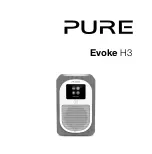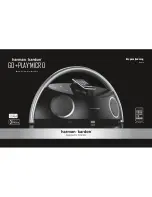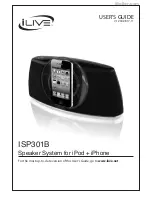
Caution:
The NHT in-ceiling speakers should be installed by an experienced and licensed
custom installation professional. Be sure that the installer possesses sufficient skill, the prop-
er tools, knowledge of local fire and building codes, and a familiarity with the structure of the
building (especially wall and/or ceiling materials, layouts, electrical and plumbing lines, etc.).
Placement
NHT in-ceiling speakers are designed for installation between standard wood joists. Their moisture resistant drive units allow them to
be installed in moisture prone interior environments such as bathrooms, indoor swimming pool and sauna rooms. Outdoor use is not
recommended.
Spend some time considering placement prior to installing the speakers. Once they are installed, they are permanent, so their location
should be selected carefully. When possible, locate the speakers at least 3 feet from adjacent side walls and at least 2 feet from front
or rear walls. The speakers should be mounted on a flat surface to ensure a good seal between the baffle and the mounting surface.
When possible, position the speakers so that they are equidistant from the most likely listening area. If the NHT in-ceiling speakers are
going to serve as rear (surround) channels in a home theater system, make sure to install them toward the “rear” of the room (the oppo-
site side from where the television will likely be). For best results, position the NHT in-ceiling speakers 40 to 60 degrees off-axis from
the listening position. The polar plots, located on the NHT website, indicate smoother frequency response at these angles. If you wish
to get an idea how they will look, try taping the supplied cutout templates to the ceiling.
Tech Tips: Pre-Wiring for New Construction
1.
For best results, avoid running speaker wire near AC wire, as it may induce a 60Hz hum in the audio signal. It’s a good idea to run
the speaker wire after the AC wiring has already been completed, so that you can route the speaker wire at least three feet away from
the AC wiring. If speaker wire and AC wiring must run parallel, install the speaker wire within a steel conduit. Note that low voltage
wiring (doorbell, intercom, telephone, security, etc.) is unlikely to induce hum and can typically be run parallel to speaker wire with no
detrimental effects.
2.
When drilling holes through wall studs or ceiling joists, use a drill bit that is at least as wide as the speaker cable that will be routed
through them. Always drill through the center of the stud or joist. If the hole must be drilled within one inch of the edge of a wall stud,
add a nail plate to the drywall side to protect the wire from possible nails and screws put in the wall later. Line up the holes in the studs
or joists as you go, so that pulling the wire through them will be easier.



























